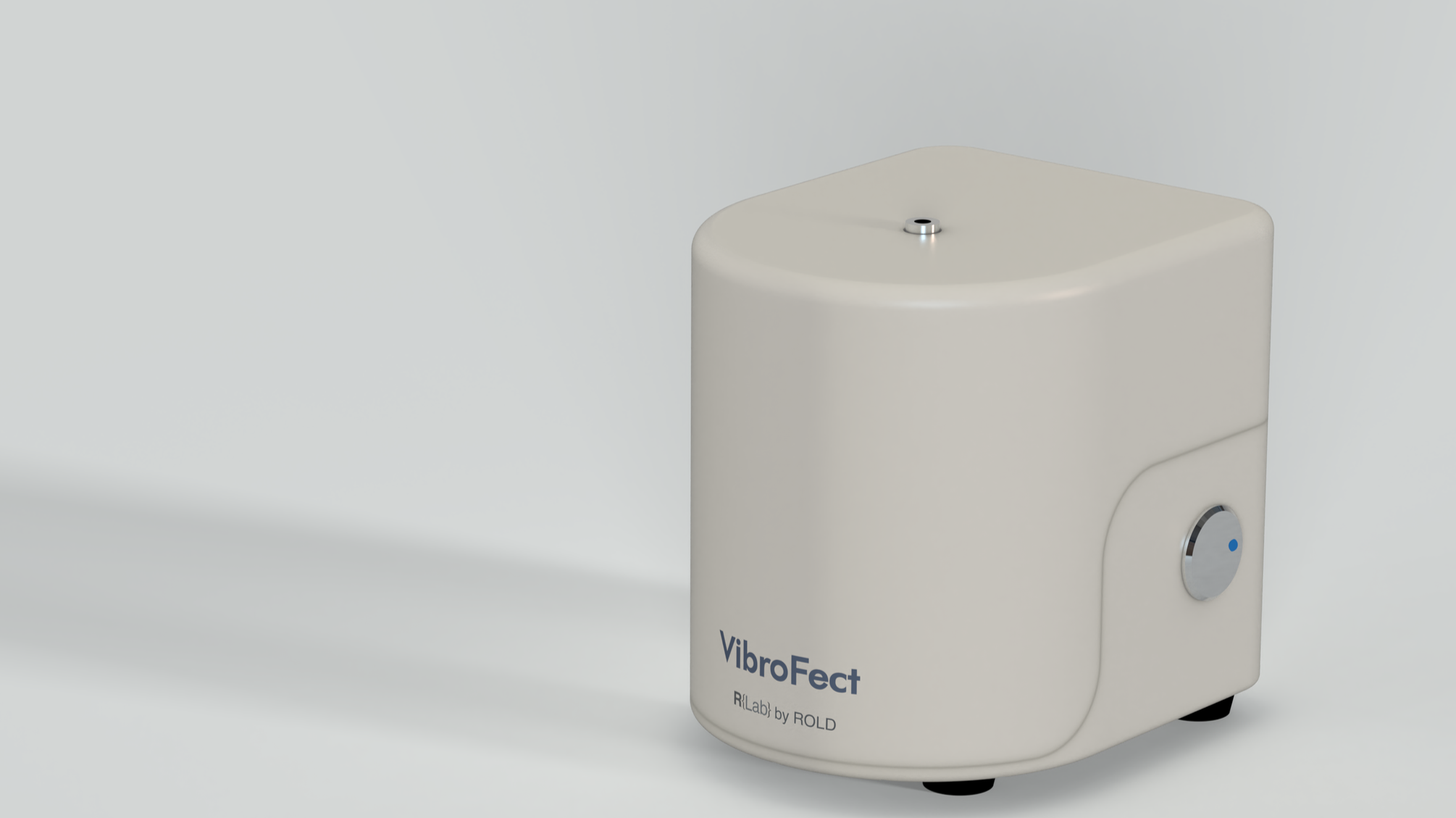The VibroFect Device:
The Oscillatory Motion Transfection System
This device configuration enables controlled mechanical stimulation of transfection solutions, resulting in enhanced mixing compared to conventional mechanical or manual mixing methods
Key features
User-friendliness: plug-and-play unit requiring no setup for routine laboratory use
Direct operational feedback: LED status indication for operational confirmation
Easy maintenance: simple, accessible design with a smooth, laboratory-friendly finish for routine cleaning and maintenance
Minimal footprint: small benchtop size suitable for standard laboratory workspaces
High portability: lightweight design for easy placement and storage in the laboratory
Optimal stability: four rubber feet for vibration isolation and stable positioning
Device Components
Component 1: Wave Generator
Function: generates waves with controlled amplitude and frequency
Controls: adjusts frequency (100 Hz - 10 kHz) and amplitude
Output: electrical signal to power the mechanical actuator
Component 2: Mechanical Actuator (Wave Driver)
Function: converts input voltage into uniaxial motion along the z-axis
Design: sturdy electromechanical actuator with a drive shaft
Motion Type: controlled oscillatory movement with adjustable displacement
Connection: receives electrical input from the wave generator and provides mechanical output
Component 3: Test Tube Housing
Function: holds laboratory test tubes and transmits oscillatory motion to samples
Design: secure mounting system for standard laboratory tubes
Coupling: direct mechanical connection to the actuator’s drive shaft
Sample Capacity: fits tubes from 0.1 mL to 2 mL
Device Operation and Motion Characteristics
Direction: Uniaxial vertical oscillation (z-axis)
Frequency Range: 100 Hz to 10 kHz
Amplitude Range: 200 nm to 2 mm
Waveforms: Sine, square, or triangular wave patterns
Operational Sequence
Sample Loading: a test tube containing the nucleic acid and the VibroFect reagent is secured in housing (Component 3)
Signal Generation: the wave generator (Component 1) produces a controlled electrical waveform
Mechanical Conversion: the actuator (Component 2) converts an electrical signal to precise mechanical oscillation
Sample Treatment: oscillatory motion is transmitted through the housing to the sample tube
Duration Control: treatment time is 10 seconds



